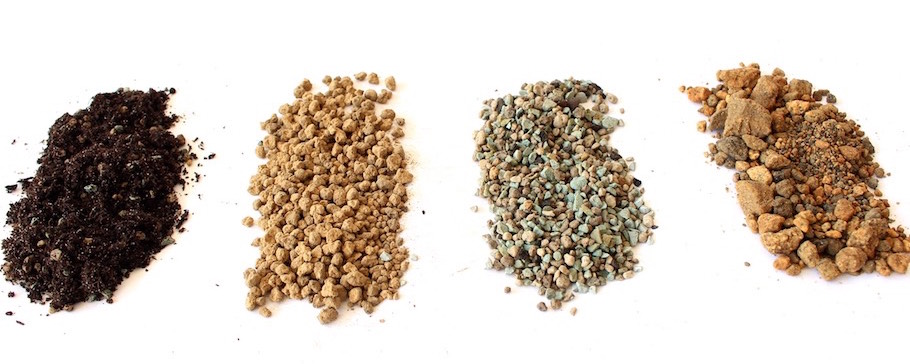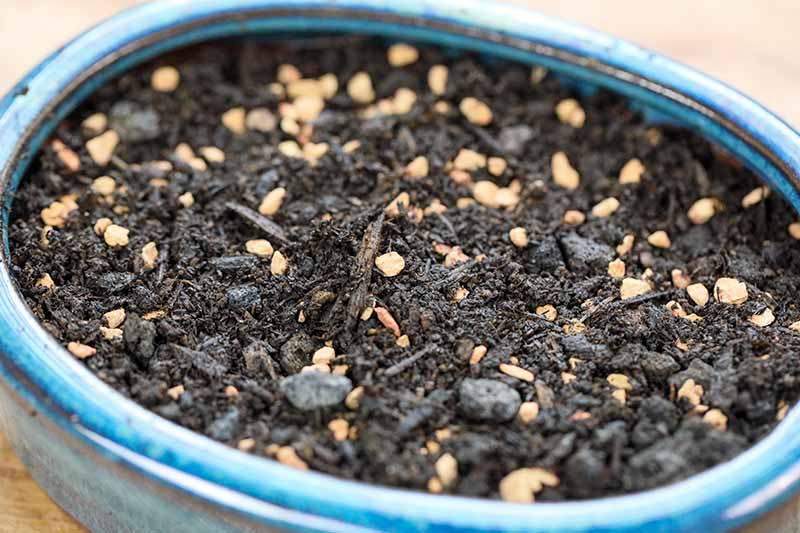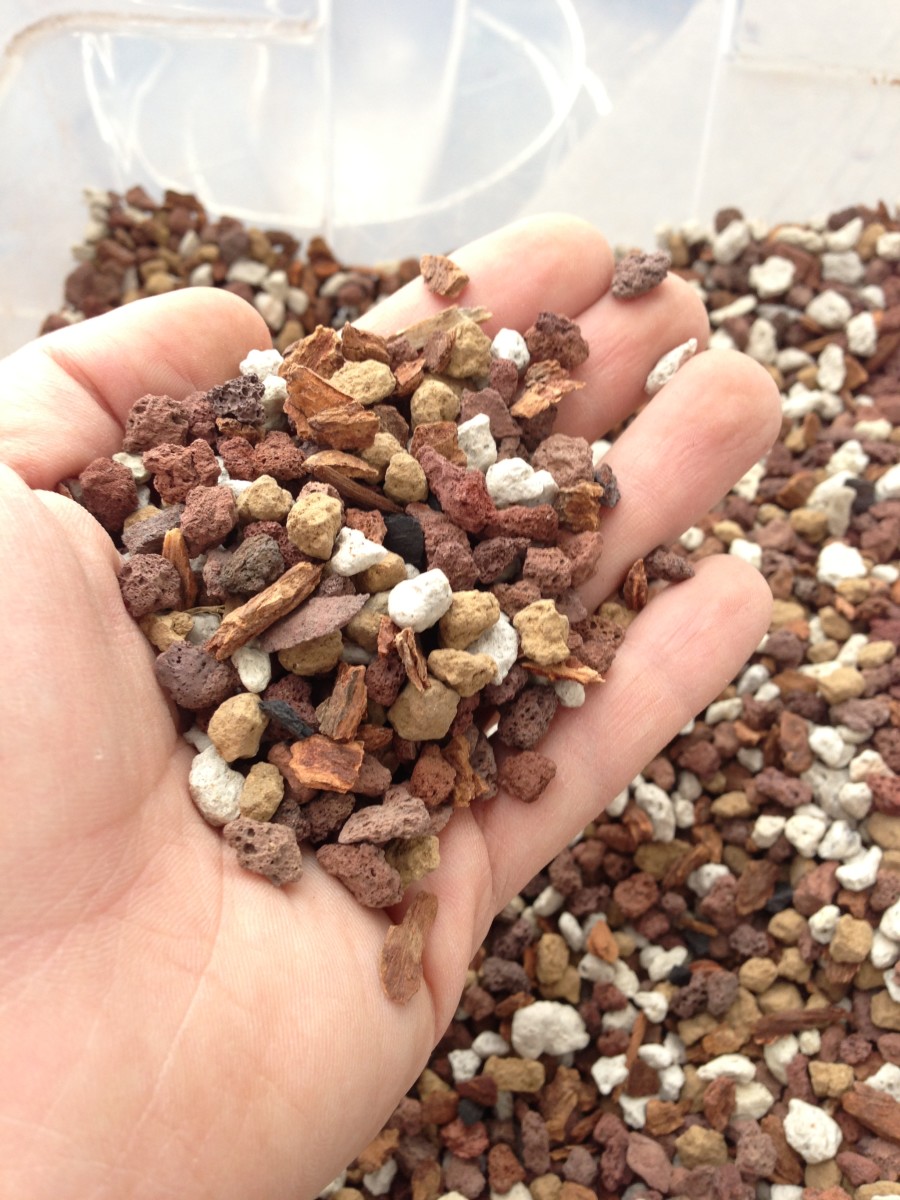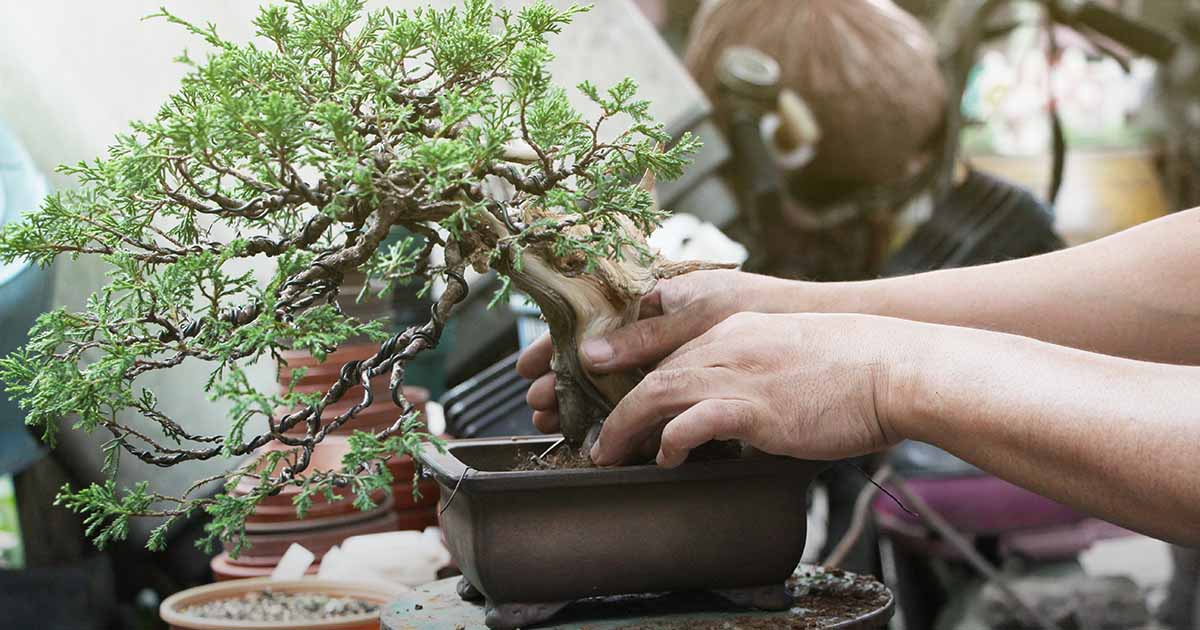Rumored Buzz on lava rock bonsai soil
If you have ever been captivated by the art of bonsai, you may be questioning if special soil is required to cultivate these miniature masterpieces. The answer is Sure! Unique soil is essential for the wellness and vitality of bonsai trees.On this page, we are going to explore the different types of soil and substrates used in bonsai cultivation, which includes organic and inorganic solutions.
We will also learn advised soil mixtures for numerous bonsai species, such as deciduous, coniferous, and indoor types. From akadama and pumice to moss and river sand, we will dive into your interesting earth of bonsai soil and assist you to understand why It truly is an essential part of cultivating these exquisite trees.

Bonsai soil
What is bonsai soil?
Bonsai soil is a specialized type of soil that is specifically formulated for growing and maintaining bonsai trees. Unlike regular garden soil, bonsai soil is well-draining and provides the necessary nutrients and moisture balance for the tree's root system. The composition of bonsai soil is carefully designed to meet the unique needs of bonsai trees, ensuring their health and longevity.
The importance of bonsai soil
The choice of soil plays a crucial role in the success of your bonsai tree. The right soil provides optimal drainage, allowing excess water to flow freely and preventing root rot. It also promotes a healthy and well-developed root system, which is essential for the overall health and growth of the tree. Bonsai soil retains moisture while allowing air to reach the roots, striking the perfect balance for the tree's needs. Choosing the right bonsai soil is essential for maintaining a healthy and thriving bonsai tree.
Bonsai substrates
What are bonsai substrates?
Bonsai substrates refer to the different materials that can be used to create the ideal soil composition for bonsai trees. These substrates are carefully chosen to meet the specific needs of different species of bonsai trees and to ensure proper water drainage and nutrient availability.
Different types of bonsai substrates
There are various types of bonsai substrates available, each with its own unique characteristics and benefits. Some common bonsai substrates include:
- Organic materials: These include ingredients such as bark, peat moss, and coconut coir. Organic substrates help retain moisture and provide essential nutrients to the bonsai tree.
- Inorganic products: These involve factors like pumice, lava rock, and akadama. Inorganic substrates deliver superb drainage, guaranteeing that extra h2o won't accumulate around the roots on the bonsai tree.
- Soil amendments: These are typically substances which can be added towards the soil mixture to enhance its Homes. Samples of soil amendments include things like perlite, vermiculite, and sand. They Enhance the soil's aeration, drinking water-holding capacity, and nutrient availability.
By comprehending the differing types of bonsai substrates as well as their Houses, you can choose the most suitable 1 for your bonsai tree's wants.
Natural and organic or Inorganic Soils
Organic soils for bonsai
Organic and natural soils for bonsai are made up of organic products which include bark, peat moss, coconut coir, and compost. These resources supply a loaded source of nutrients to the bonsai tree and advertise healthier root progress. Natural and organic soils even have fantastic water retention properties, guaranteeing that the tree gets ample moisture among watering classes. Nevertheless, it is vital to notice that organic and natural soils may stop working after some time and come to be compacted, leading to lousy drainage and probable root issues.
Inorganic soils for bonsai
Inorganic soils for bonsai consist of resources like pumice, lava rock, akadama, and soil amendments like perlite or vermiculite. These components have great drainage Attributes, avoiding waterlogged soil and promoting aeration round the roots. Inorganic soils are favored by lots of bonsai fanatics because of their longevity and skill to provide a stable atmosphere for that bonsai tree's root program. However, They could demand much more frequent watering and additional fertilization, as they do not maintain just as much humidity or nutrients as organic and natural soils.
Positives and negatives of making use of organic and inorganic soils for bonsai
Deciding upon involving organic and natural and inorganic soils for your bonsai tree is determined by several things, including the specific species of tree, your local climate, and personal Choices. Here's the advantages and disadvantages of each:
Organic soils:
- Pros: Supply nutrients, very good h2o retention, endorse nutritious root enhancement.
- Disadvantages: May possibly break down after some time, likely for poor drainage Otherwise effectively maintained.
Inorganic soils:
- Execs: Excellent drainage, extended-Long lasting, stable ecosystem for roots.
- Downsides: Much less drinking water retention, might need additional frequent watering and fertilization.
By considering the positives and negatives of both natural and inorganic soils, you can also make an educated conclusion dependant on the particular needs of your bonsai tree.
Soil factors
Vital factors of bonsai soil
Bonsai soil is typically made up of three key factors: grit, natural and organic issue, and clay. These parts perform jointly to build the ideal soil construction for the bonsai tree's root procedure.
- Grit: Grit, for example sand or perlite, presents drainage and aeration during the soil. It can help protect against waterlogging and enables air to reach the roots.
- Natural and organic make any difference: Organic and natural make a difference, for example compost or bark, supplies nutrients into the bonsai tree. What's more, it aids keep dampness and Enhance the soil's overall construction.
- Clay: Clay particles provide some h2o retention characteristics and assistance bind the soil jointly. Nonetheless, an excessive amount of clay may lead to very poor drainage and compaction.
Function of each soil element
Each soil component plays an important function in making a effectively-balanced and balanced setting for the bonsai tree's roots.
- Grit: Grit presents the required drainage and aeration during the soil. It prevents the roots from sitting down in stagnant drinking water, reducing the chance of root rot and advertising overall root wellbeing.
- Natural matter: Organic and natural make a difference provides important nutrients to the bonsai tree. It aids in humidity retention and contributes to the general structure of your soil.
- Clay: Clay particles support bind the soil with each other and supply some water retention potential. Nonetheless, it is vital to stability the level of clay to prevent challenges like very poor drainage and compaction.
By being familiar with the roles of every soil component, you may create a balanced bonsai soil combine that meets here the precise requires of the tree.

Recommended Bonsai soil mixtures
Common bonsai soil mixtures
There are several common bonsai soil mixtures that have been proven effective for various types of bonsai trees. These mixtures typically consist of a combination of inorganic substrates, organic matter, and soil amendments.
Some of the commonly used bonsai soil mixtures include:
- Akadama, pumice, and lava rock: This mixture is popular among bonsai enthusiasts for its excellent drainage and water retention properties.
- Akadama, lava rock, and organic subject: This mixture brings together some great benefits of inorganic substrates with the nutrient-loaded Homes of organic subject.
- Pumice, perlite, and bark: This mixture supplies good drainage and aeration even though retaining some humidity and offering nutrients.
They are just a couple samples of bonsai soil mixtures, and the ideal combination will count on the specific requirements of one's bonsai tree and your local weather.
Components to take into consideration when deciding upon a bonsai soil combination
When deciding upon a bonsai soil mixture, it is vital to contemplate the subsequent components:
- Species of bonsai tree: Diverse species have distinctive moisture and nutrient needs. Exploration the specific wants of your respective tree to pick a soil combination that meets its demands.
- Local climate: The weather you reside in can influence the dampness retention Qualities on the soil. Evaluate the typical humidity and temperature in your neighborhood When picking a soil combination.
- Watering practices: Your personal watering behavior and regime should align Together with the soil combination you end up picking. Some mixtures call for much more Repeated watering, while some keep moisture for more time durations.
- Funds: Some soil parts may be more expensive than Other people. Take into account your spending plan when picking out a soil combination.
By getting these factors into account, it is possible to go with a bonsai soil combination that gives the best developing conditions for your tree.
Deciduous Bonsai soil
Very best soil composition for deciduous bonsai
Deciduous bonsai trees, like maple or birch, have certain soil demands to assist their expansion and wellbeing. The very best soil composition for deciduous bonsai commonly includes a mix of natural issue, inorganic substrates, and soil amendments.
A advised soil composition for deciduous bonsai may possibly incorporate:
- Akadama: Delivers superior h2o retention although enabling for drainage. What's more, it releases nutrients slowly over time.
- Pumice: Encourages aeration and drainage during the soil, blocking waterlogging.
- Bark or peat moss: Provides organic subject to your soil, giving nutrients and dampness retention.
This soil composition makes sure that the roots of deciduous bonsai trees receive the right equilibrium of humidity, nutrients, and oxygen for optimum expansion.

Coniferous and Pine soil
Ideal soil mixture for coniferous and pine bonsai
Coniferous and pine bonsai trees have specific soil requirements due to their water retention needs and preference for acidic soil. An ideal soil mixture for coniferous and pine bonsai should provide good drainage while retaining moisture and maintaining the desired pH level.
A recommended soil mixture for coniferous and pine bonsai may include:
- Akadama: Provides excellent water retention while allowing for sufficient drainage. It releases nutrients slowly over time.
- Pumice: Encourages aeration and drainage from the soil, protecting against waterlogged roots.
- Peat moss: Adds organic issue and acidity towards the soil, making an excellent pH stage for coniferous and pine trees.
This soil mixture ensures that the roots of coniferous and pine bonsai trees acquire the appropriate stability of moisture, nutrients, and acidity for his or her certain needs.
Akadama
Exactly what is akadama?
Akadama is a form of clay soil which is widely Utilized in bonsai cultivation. It's recognized for its superb drinking water retention properties, which assure a gradual source of dampness to your bonsai tree's roots. Akadama is additionally prized for its power to launch nutrients slowly and gradually eventually, providing a reliable supply of nourishment for that tree.
Advantages of employing akadama in bonsai soil
Using akadama in bonsai soil presents several Gains:
- Water retention: Akadama has Fantastic h2o retention properties, enabling it to hold humidity without turning out to be waterlogged. This makes sure that the bonsai tree's roots receive a constant offer of drinking water, advertising balanced expansion.
- Nutrient launch: Akadama slowly releases nutrients in to the soil after a while, offering a reliable supply of nourishment for the bonsai tree. This lessens the need for frequent fertilization and assists sustain a balanced nutrient profile.
- Aeration: Even with its h2o retention abilities, akadama also delivers enough aeration to the bonsai tree's roots. It enables air to get to the root procedure, stopping problems like root rot resulting from insufficient oxygen.
By incorporating akadama to the bonsai soil, you can create an optimal expanding atmosphere to your tree, making certain its well being and vitality.

Lava rock
How lava rock benefits bonsai soil
Lava rock is a popular component in bonsai soil mixtures due to its excellent drainage and aeration properties. It is typically used in conjunction with other substrates to create the ideal soil composition for bonsai trees.
The benefits of lava rock in bonsai soil include:
- Drainage: Lava rock provides excellent drainage, preventing waterlogging and ensuring that excess water flows freely through the soil. This helps prevent root rot and provides a healthy environment for the roots to thrive.
- Aeration: The porous nature of lava rock enables air to flow into throughout the soil, giving oxygen on the bonsai tree's root procedure. Good aeration is essential for healthful root advancement and General tree growth.
- Longevity: Lava rock is usually a durable material that doesn't break down easily. This makes certain that the soil framework remains stable as time passes, reducing the necessity for frequent soil replacements.
Lava rock is available in several dimensions and styles, allowing for for personalization according to the precise requirements of your bonsai tree and soil prerequisites.
Different types of lava rock
You will discover differing types of lava rock that can be used in bonsai soil mixtures, which include:
- Black lava rock: Black lava rock is really a typically made use of substance in bonsai soil mixtures. It provides outstanding drainage Attributes and adds an aesthetic component to the overall presentation from the bonsai tree.
- Red lava rock: Red lava rock is yet another popular alternative in bonsai soil mixtures. It offers related drainage and aeration Added benefits as black lava rock but has a definite reddish color that adds Visible desire to your container.
The two black and purple lava rocks are extensively readily available and can be effortlessly integrated into your bonsai soil combination.
Potting
Essential techniques for prosperous bonsai potting
Potting is really a vital course of action in bonsai cultivation, as it right impacts the health and improvement with the tree's roots. Here are some important techniques for prosperous bonsai potting:
- Pick the appropriate pot dimensions: Choose a bonsai pot that enables for root progress though continue to furnishing a snug suit. Stay away from pots which have been too large, as they can result in excessive soil humidity and poor root improvement.
- Use bonsai wire: Secure the tree within the pot utilizing bonsai wire to make sure stability. This helps prevent the tree from shifting or turning into uprooted during watering or strong winds.
- Trim and unfold the roots: In advance of potting the bonsai tree, cautiously trim and unfold out the roots. This encourages outward development and prevents root tangling or root-sure issues.
- Insert mesh screens: Place mesh screens over the drainage holes at the bottom on the pot to stop soil erosion and guarantee correct drainage.
- Use new bonsai soil: When potting, normally use clean bonsai soil to provide the mandatory nutrients and ideal growing disorders for your roots.
By adhering to these crucial strategies, you are able to make sure a successful potting check here procedure and boost the general well being and development of the bonsai tree.
The purpose of bonsai pots in soil humidity Management
Bonsai pots Participate in a crucial job in soil dampness Handle, immediately impacting the well being and growth on the tree. Bonsai pots are usually shallow and have drainage holes, enabling excess drinking water to flee and avoiding the soil from starting to be waterlogged.
The design of bonsai pots promotes evaporation and air circulation, which allows control soil humidity ranges. The shallow depth and wide opening with the pot expose additional surface area region on the soil towards the air, aiding in humidity evaporation. This stops the roots from sitting in excessively soaked soil, decreasing the risk of root rot as well as other h2o-connected troubles.
Moreover, the drainage holes in bonsai pots enable any extra drinking water to flee, avoiding waterlogged soil and selling aeration across the roots. Proper aeration is important for the wellbeing and development of the foundation process, making certain the bonsai tree gets the mandatory oxygen for growth.
Through the use of bonsai pots created for successful dampness Regulate, you'll be able to build a favorable natural environment for your bonsai tree's roots and boost its General wellbeing and vitality.
In conclusion, selecting the suitable bonsai soil is vital for your results and wellbeing of your bonsai tree. Comprehension the different sorts of bonsai substrates, the job of natural and organic and inorganic soils, The true secret parts of bonsai soil, and the varied suggested soil mixtures will assist you to deliver the optimal developing problems for your personal bonsai tree. Whether or not you've got a deciduous or coniferous bonsai, incorporating components like akadama and lava rock can boost the soil's drainage and nutrient availability. On top of that, paying attention to potting strategies and employing bonsai pots created for humidity control will additional help the flourishing expansion of your respective bonsai tree. With good understanding and implementation of bonsai soil techniques, you may enjoy the attractiveness and artistry of bonsai cultivation for years to come back.
